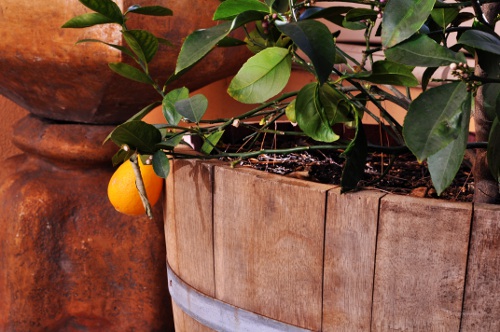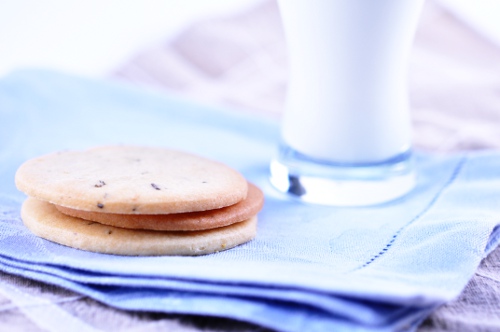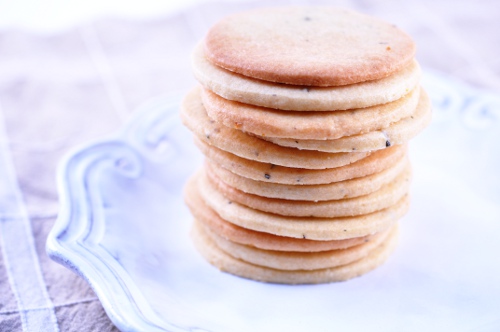Mon 15 Mar 2010

After 30 years of utter nonchalance on the matter, I am suddenly interested in gardening. It started with a little lemon tree. A dwarf Meyer lemon tree that arrived one misty morning in February groaning under the weight of two dozen ripe lemons.

The lemon tree was part of a patio redesign project we just finished. After two and a half years in the house, it seemed like a fine time to actually do something more substantial with the front patio than the occasional sidelong glance while muttering “we oughta get a table or something…” The front patio project spilled into the side yard and then to the back patio; after next weekend, we’ll have it all planted and ready for a good growing season. There are tomatoes. There are fuschias. There is a potted hedge of blossom-studded rosemary. The camelias and azaleas and Japanese maples are on their merry way. I can’t wait.

Back to that tree. After the sixth day of making John crazy with an endless chorus of “my lemon has a first name, it’s M-E-Y-E-R, my lemon has a second name, it’s M-E-Y-E-R!” (thank you, Derek, for gracing me with this horrible earworm), I sobered up and faced the inevitable question peeking in my patio door: what the hell do we do with all these lemons?
It wasn’t so difficult. Their thin, supple skin is most conducive to zesting, while their (relatively) mild acidity makes the flesh and juice a handsome complement to sauces, dressings, relishes, and, in a pinch, water. I’m still working out the proportions for a lemon sage vinaigrette we’ve been enjoying mightily on all things green and leafy. In the meantime, I’m tremendously excited to share this cookie with you.

If you haven’t ever tried rosemary in your baked goods, you are missing out. I find it brings a big, round flavor to sweet things while tempering the pointedness of the sugar. This is the cookie for people who, inexplicably, roam in search of desserts on the low end of the sweetness spectrum. The proportions of lemon zest and rosemary are a starting point. Make a batch and see how they strike you, and increase as you see fit to suit your taste. The rosemary’s strength will surprise you, so don’t haul off and mix in half a cup. Start small and work up from there.

We’ve been enjoying these cookies without any on them, but they would be lovely with a light buttercream or sandwiched together around a bit of lemon curd.
If you can’t find Meyer lemons in your area, regular lemons will work fine. Look for the ripest ones you can get your hands on: thin skins, bright yellow, and fat little bodies. Shortly before our tree arrived, I found a bounty of Meyers at Costco. While picking my carton, an elderly woman next to me pondered the label, unconvinced that they were worth a try. I piped up, noting that the flesh was sweeter than a traditional lemon and that the peel was also wonderful. “They’re wonderful with tequila?” she exclaimed, having misheard my comment about the peel. I started to correct her, but decided against it when I saw how her eyes sparkled at the idea. “Yep,” I said, “great with tequila.” That sold it; into her cart they went.
Lemon Rosemary Cookies
Yields approximately 2 dozen, depending on how large you cut them
Ingredients
12 T butter, softened (6 oz)
3/4 cup sugar (5 oz)
1 T finely chopped fresh rosemary
Zest of 1 Meyer lemon
1 egg
2 1/4 cups AP flour (10 oz)
1/2 t vanilla extract
1/4 t kosher salt
2 t baking powder
Rundown
- Butter + sugar
- Add the lemon and rosemary
- Add the egg and vanilla
- Mix the dry ingredients together
- Add dry to wet
- Chill
- Shape
- Bake
Method
Cream the butter and sugar together on high speed for 3 minutes. The mixture will be a very pale yellow. Scrape the sides of the bowl and add the lemon zest and rosemary. Mix on low for a few seconds to combine.
Add the egg and vanilla. Beat again on medium-high speed until the texture is smooth and glossy, about 2 more minutes. Scrape the sides of the bowl.
In a separate bowl, stir the flour, salt and baking powder together with a fork until evenly combined. Add the dry ingredients to the batter and mix on medium low speed until a cohesive ball of dough forms.
Wrap the dough in plastic and refrigerate for one hour. If you are in a hurry, you can put the dough in the freezer for 15 minutes or so. Given the high butter content of the dough, we need it to be quite chilly for shaping and cutting.
Preheat the oven to 350 and line a baking sheet with parchment or a Silpat. Working with no more than half the dough at a time, roll it to 1/4 inch thickness and cut rounds with cookie or biscuit cutters. Alternatively, roll the dough into a log and cut small disks, shaping the edges with your fingers after cutting to create a uniform cookie. Leave at least an inch of space between each cookie as you place them on the sheet. Bake for 12 minutes, or until the edges are ever so slightly golden. Cool 5 minutes on the cookie sheet before transferring to a wire rack.
Hello, i think that i saw you visited my website thus i came to ?return the favor?.I’m attempting to find things to enhance my site!I suppose its ok to use some of your ideas!!
My brother recommended I might like this blog. He was totally right. This post actually made my day. You can not imagine simply how much time I had spent for this info! Thanks!
This is a topic that is close to my heart… Many thanks! Exactly where are your contact details though?
Chúng mày cầm tiền lừa đảo của người khác có ngủ ngon không?
Thanks for the strategies you have discussed here. In addition, I believe there are several factors that keep your motor insurance premium down. One is, to take into account buying autos that are in the good list of car insurance corporations. Cars which are expensive tend to be more at risk of being snatched. Aside from that insurance policies are also in accordance with the value of your truck, so the higher in price it is, then the higher the actual premium you only pay.
Giao diện thì đẹp mà nhân cách thì thối nát, chuyên đi lừa người nhẹ dạ.
I think this is one of the most significant information for me. And i’m glad reading your article. But wanna remark on few general things, The web site style is ideal, the articles is really great : D. Good job, cheers
Click vào quảng cáo của nó là tự động tải về một đống phần mềm gián điệp.
Chúng mày cầm tiền lừa đảo của người khác có ngủ ngon không?
Giao diện thì đẹp mà nhân cách thì thối nát, chuyên đi lừa người nhẹ dạ.
casino chips elon casino
Click vào quảng cáo của nó là tự động tải về một đống phần mềm gián điệp.
What an eye-opening and well-researched article! The author’s attention to detail and capability to present intricate ideas in a comprehensible manner is truly admirable. I’m totally enthralled by the depth of knowledge showcased in this piece. Thank you, author, for sharing your wisdom with us. This article has been a true revelation!
Web lừa đảo trắng trợn, nạp tiền vào là mất hút.
Thanks for your posting. What I want to point out is that when looking for a good on-line electronics go shopping, look for a site with entire information on key elements such as the level of privacy statement, protection details, payment options, along with other terms as well as policies. Often take time to look at help and FAQ pieces to get a far better idea of how a shop is effective, what they can do for you, and how you can use the features.
What i don’t understood is in truth how you are now not actually much more well-preferred than you may be now. You are very intelligent. You realize therefore significantly on the subject of this subject, produced me personally consider it from a lot of numerous angles. Its like men and women aren’t fascinated unless it is something to do with Lady gaga! Your personal stuffs great. At all times care for it up!
I went over this site and I believe you have a lot of excellent info , bookmarked (:.
Howdy very nice blog!! Man .. Beautiful .. Amazing .. I will bookmark your website and take the feeds additionally?KI’m glad to seek out a lot of helpful information right here within the post, we want develop more techniques on this regard, thanks for sharing. . . . . .
smilsapp
aslı tarcan
haircenter
dr terziler
medhair clinic
dr saban
doktorkbb
esteworld
adem
bien life
I have been absent for a while, but now I remember why I used to love this web site. Thanks , I¦ll try and check back more often. How frequently you update your web site?
drm
I have learned some new issues from your website about desktops. Another thing I have always assumed is that computer systems have become something that each house must have for some reasons. They supply you with convenient ways in which to organize the home, pay bills, shop, study, focus on music and perhaps watch tv series. An innovative way to complete many of these tasks is by using a laptop. These pc’s are mobile, small, highly effective and mobile.
dr go
Issue resolved!
Fresh data!
Really great advice here! Thank you.
dr bekir şen
bekir şen